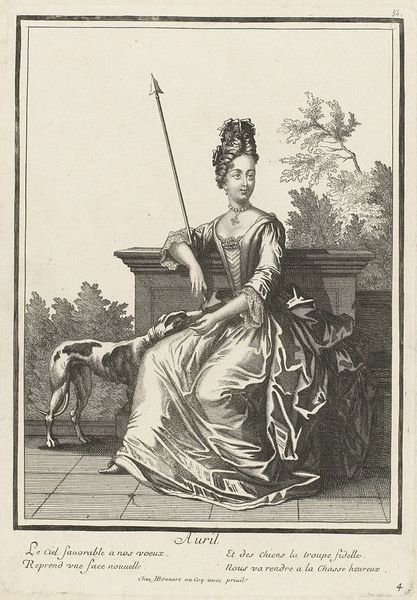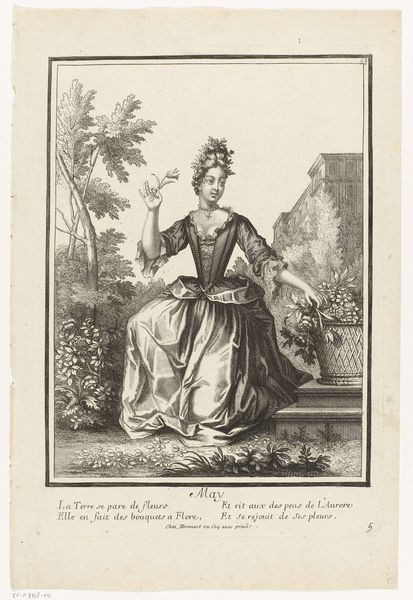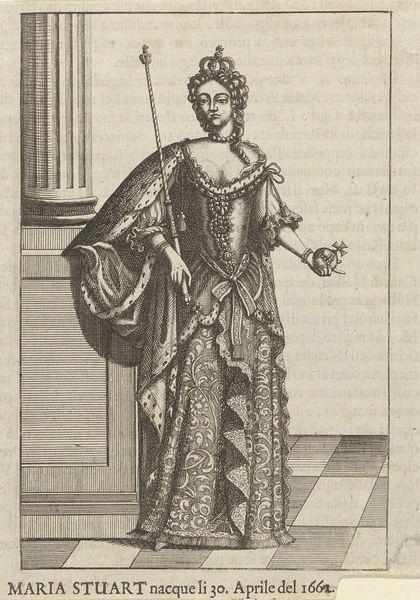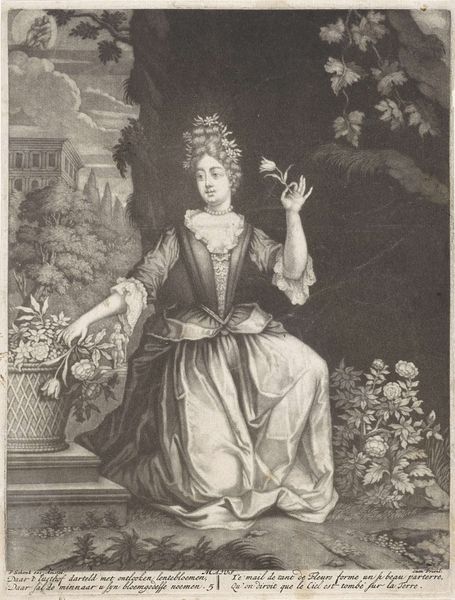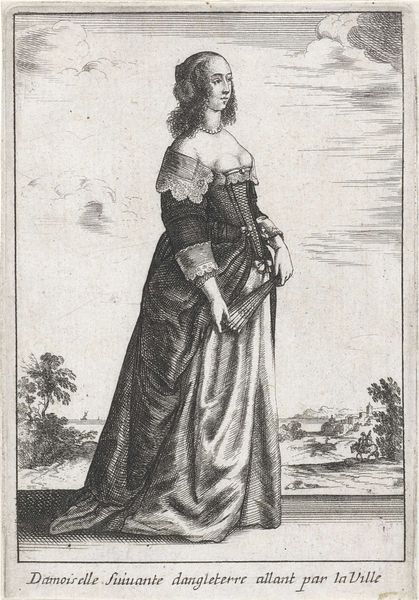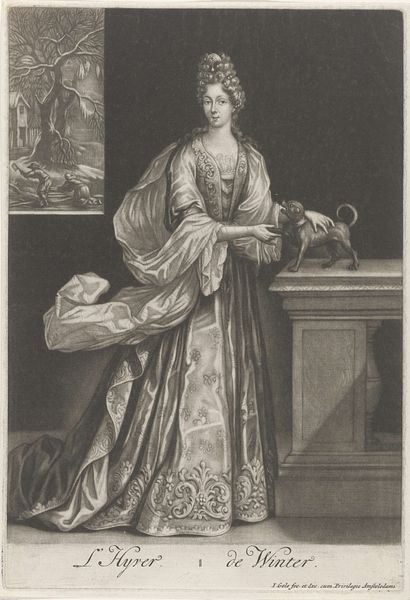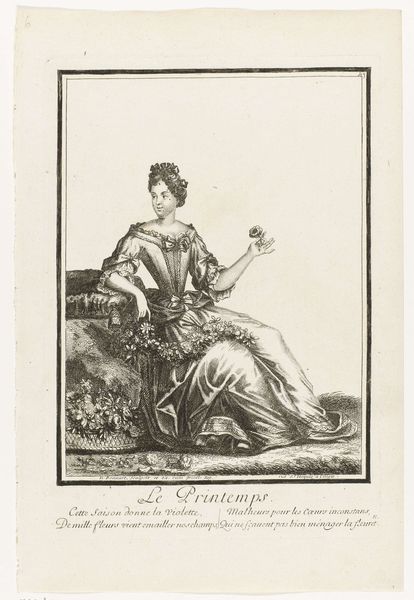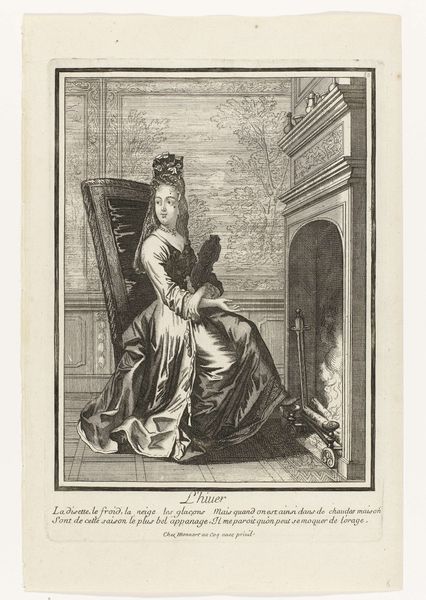
engraving
#
portrait
#
allegory
#
baroque
#
old engraving style
#
caricature
#
line
#
history-painting
#
engraving
Dimensions: height 273 mm, width 187 mm
Copyright: Rijks Museum: Open Domain
Editor: Here we have "Architectuur," an engraving attributed to Nicolas Bonnart, dating sometime between 1647 and 1718. It depicts a woman holding a miniature building. The intricate line work is really striking; it creates such depth. How do you interpret the composition? Curator: Indeed. The formal structure suggests a dialogue between the concrete and the abstract. Notice the clear, precise lines used to delineate form. Observe the contrasts between the texture of her gown and the smooth surface of the architectural model, which can be seen as contrasting material vocabularies. Consider also the orthogonal lines created by the drafting square against the more organic curves of the drapery. What might that opposition signify? Editor: It makes me think about the precision and order required to create architectural forms, contrasting with the fluid, more natural world. What do you make of the column on the right, which dwarfs the figure? Curator: Excellent observation. The column asserts dominance. It isn’t just a supporting element; it stands for something much more. Note how the artist juxtaposes this symbol of grand, classical architecture with the woman who represents the allegorical concept of Architecture, almost subservient. It might lead one to think about how human creativity relates to lasting achievement. How does her pose affect your reading of the artwork? Editor: She appears thoughtful, almost contemplative, about her creation, holding this building as if considering how it will change the world. The poem under the engraving is about beauty coming from the artist's hand and that children will follow the example. That is not something I would have noticed immediately, without your prompts. Thank you. Curator: It's precisely by engaging with these formal cues and structures that we unlock layers of interpretation and engage more deeply with the work's composition and historical intentions.
Comments
No comments
Be the first to comment and join the conversation on the ultimate creative platform.
